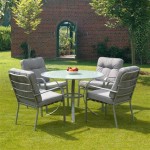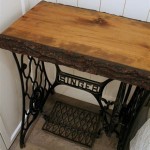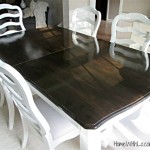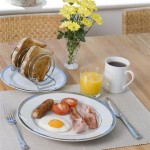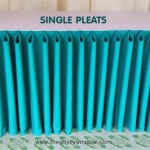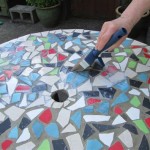```html
Md Cabin Table Design: Principles, Materials, and Applications
Md Cabin Table Design, often associated with modern design principles and minimalist aesthetics, represents a specific approach to creating tables for cabins and other compact living spaces. These designs prioritize functionality, durability, and a seamless integration with the surrounding environment. The core philosophy revolves around maximizing utility within limited square footage while maintaining a sophisticated and aesthetically pleasing appearance. This approach typically involves careful consideration of materials, dimensions, and the overall form to achieve a balance between practicality and visual appeal. The term "Md" in this context often alludes to a modern design sensibility, focusing on clean lines, simple shapes, and a lack of unnecessary ornamentation.
The principles guiding Md Cabin Table Design extend beyond mere aesthetics. They encompass a deep understanding of spatial dynamics and the needs of the cabin dweller. A well-designed Md Cabin Table should not only serve its primary function – be it dining, working, or storage – but should also contribute to the overall ambiance and efficiency of the cabin. This often involves multi-functional designs, space-saving mechanisms, and a deliberate choice of materials that complement the natural setting. The designers often consider the available light, the existing architecture, and the intended use of the cabin when developing a table design.
The selection of materials is a critical aspect of Md Cabin Table Design. Given the potential exposure to weather and the desire for longevity, durable and weather-resistant materials are preferred. Commonly used materials include various types of wood, metal, and engineered composites. The design might incorporate a blend of these materials to achieve a specific aesthetic or to optimize performance. For example, a solid wood tabletop might be paired with a metal frame for structural support and a modern look. The chosen finish plays a crucial role in protecting the table from moisture, UV radiation, and general wear and tear. The design will also be mindful of sustainability practices sourcing materials from environmentally responsible suppliers.
Functionality and Space Optimization
A key characteristic of Md Cabin Table Design is its emphasis on functionality and space optimization. Cabin spaces are often constrained, necessitating designs that make the most of the available area. Folding tables, drop-leaf tables, and lift-top tables are common examples of space-saving solutions employed in these designs. These mechanisms allow the table to be easily adjusted to different sizes or configurations as needed, providing flexibility and adaptability. Storage is frequently integrated into the table design as well. Drawers, shelves, or hidden compartments can be incorporated to provide additional storage space for items such as books, utensils, or electronics. This multi-functional approach helps to minimize clutter and maximize the utility of the table.
Ergonomics also plays a vital role in Md Cabin Table Design. The table height, surface area, and legroom should be carefully considered to ensure comfortable use. This is particularly important if the table is intended for dining or working. The design might incorporate adjustable features to accommodate users of different heights or preferences. The edges and corners of the table should be rounded or beveled to prevent injuries. The overall design should promote good posture and minimize strain. Therefore, it is essential that the dimensions are suited to the functions that the table will perform.
Furthermore, the placement of the table within the cabin is a crucial consideration. The table should be positioned in a location that is both accessible and conducive to its intended use. It should not obstruct pathways or block natural light. The design might incorporate features that allow the table to be easily moved or repositioned as needed. The table should also be placed in a location that is visually appealing and complements the overall design of the cabin. Therefore, even before designing the table, an understanding of the space is required.
Material Selection and Durability
The selection of appropriate materials is paramount in Md Cabin Table Design, particularly considering the potential exposure to environmental elements. Solid hardwoods like oak, maple, and walnut are often chosen for their durability and natural beauty. These woods are resistant to scratches, dents, and other forms of wear and tear. They also possess a timeless aesthetic that complements a wide range of cabin styles. However, solid wood can be susceptible to moisture damage, so proper sealing and finishing are essential. Teak, known for its exceptional water resistance, is also a material considered, though more expensive.
Metal is another commonly used material in Md Cabin Table Design. Steel and aluminum are popular choices due to their strength, durability, and resistance to corrosion. Metal frames and legs can provide excellent structural support for the table. Metal components can also be powder-coated or painted to provide a protective finish and to match the overall design of the cabin. Stainless steel is considered due to its moisture and corrosion resistance. However, it is important to note that metal can be susceptible to scratches and dents. The weight should also be considered in the design to take into account its transportation and mobility within the cabin.
Engineered composites, such as plywood and particleboard, are often used in Md Cabin Table Design as well. These materials are less expensive than solid wood and metal and can be manufactured in a variety of shapes and sizes. However, they are generally less durable than solid wood and metal and can be susceptible to moisture damage. When using engineered composites, it is important to choose materials that are specifically designed for outdoor use and to protect them with a waterproof sealant. Laminates and veneers can also be applied to engineered composites to improve their appearance and durability. The design should also take into account the structural integrity of each material to ensure the safety of the design, as well as its longevity.
Aesthetic Considerations and Integration
While functionality and durability are paramount, aesthetic considerations play a significant role in Md Cabin Table Design. The table should complement the overall style of the cabin and contribute to the ambiance of the space. Clean lines, simple shapes, and a minimalist approach are often favored in Md Cabin Table Design. The table should not be overly ornate or cluttered. Rather, it should be elegant and understated. The color and texture of the materials should also be carefully considered to create a cohesive and visually appealing design. Integrating the table with the style of the cabin is required for the successful design of the table.
The natural environment surrounding the cabin can also influence the aesthetic of the table. The design might incorporate elements that reflect the natural landscape, such as wood finishes that mimic the color of the surrounding trees or textures that evoke the feeling of stone or water. Natural materials such as stone, wood, and leather can be incorporated into the table design to create a connection with the natural world. The design should also be mindful of the available light and how it interacts with the table's materials and surfaces. For example, a glossy tabletop might reflect light and create a sense of spaciousness, while a matte finish might absorb light and create a more intimate and cozy atmosphere.
The integration with other furniture and decor is also essential. The table should be sized and positioned in a way that complements the existing furniture in the cabin. A dining table should be sized appropriately for the number of people who will be using it. A coffee table should be positioned within easy reach of the seating area and its height and size should complement the sofa design. The table should also be styled with appropriate decor that enhances its aesthetic appeal and functionality. This might include vases, candles, books, or other decorative items. Thoughtful and deliberate styling can elevate the overall design of the table and create a more inviting and comfortable space. Careful consideration of the design can help bring harmony to the interior space, and a sense of connection to the exterior.
```
L Shape Wooden Md Cabin Table For Corporate Office At Rs 25000 In Hyderabad

Engineered Wood Rectangular Md Cabin Table With Storage At Rs 17500 In Bengaluru

Amazing Furniture For Boss Cabin And Interior Designing Ideas

L Shape Wooden Md Cabin Table For Corporate Office At Rs 25000 In Hyderabad

Executive Tables Welgodesk

Amazing Furniture For Boss Cabin And Interior Designing Ideas

Mdf L Shaped Md Cabin Table With Storage At Rs 85000 In New Delhi Id 2848979584130

Amazing Furniture For Boss Cabin And Interior Designing Ideas

L Shape Wooden Md Cabin Table For Corporate Office At Rs 25000 In Hyderabad

Ceo Mewah Tinggi Kantor Eksekutif Meja Mdf Modern Direktur Office Dengan Samping Cina Pengaturan Furniture Desks


